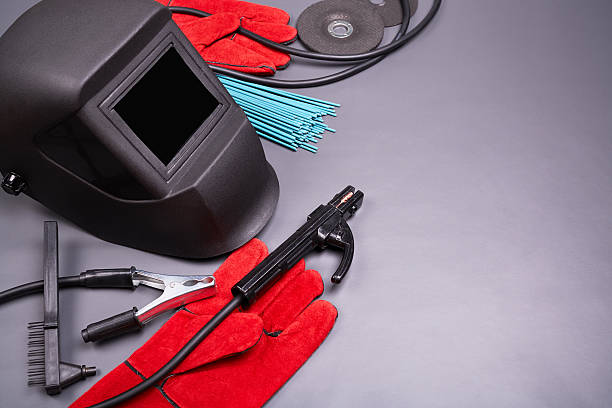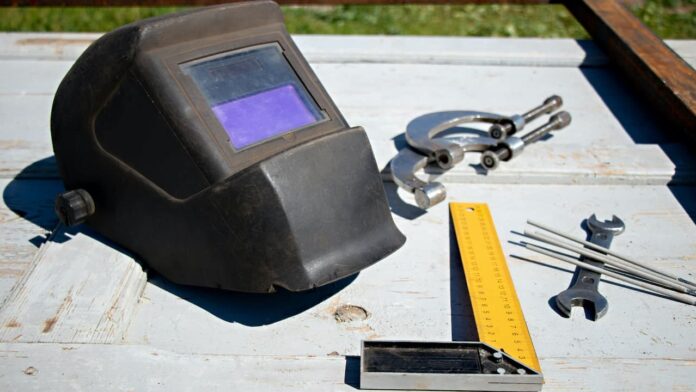You want to get started in the welding industry, but what basic equipment do you need? First things first, you need a good welder, feeds, electrodes as well as safety gear, to name a few.
Without this basic equipment, welding becomes an impossible task, like getting blood out of a stone. You need the right equipment that can perform even the simplest of things like clamping workpieces down. It makes a whole lot of difference when it comes to the whole welding process.
Getting help from an expert who can teach you all things welding may be a good idea. As a metal enthusiast, your first step to becoming a successful welder is finding the right basic welding equipment to get the dirty job done and, of course, suit your budget range!
With all the vast tools and equipment you see here and there, it’s impossible not to feel overwhelmed! That is why we are going to help you get the basic equipment to help you get started with your passion in no time!
#1: Welders
First and foremost, you will need a good welder. It makes the whole welding process run. It basically melts metal by heating them up to a controlled level of temperature in order to fuse the other metal surrounding it. High electrical flame is created through the nozzle of the welding gun.
The type of projects and materials you want to work on will determine the type of welder that you should choose. You can choose a welder that can be used for MIG, TIG, or Stick welding, depending on the project. Even though TIG welders require a higher level of skill to effectively use them and create a better weld, they are still a great option.
A good welder also offers a dual voltage which makes the welding process a whole lot easier. There are new models of welders that showcase this feature. Check the review of Everlast welders and see if they might work for you.
#2: Welding Hammers
They are essential for chipping off slabs to reveal the beauty of the weld after an arc welding. With its robust and well-balanced construction, it features a spring handle to absorb shocks effectively. When welding stainless steel, it’s highly recommended to use a chipping hammer made of stainless steel as well.
#3: Angle Grinder
An angle grinder is hands-down a necessity. Regardless of their skill level, Welders can’t get by without this one. It basically uses a grinding disk to help smooth out your workpiece, a wire brush to remove paint, a cut-off wheel to cut specific metals, and a flap disk for precise grinding. How versatile is that?
#4: Welding Helmet
The first basic equipment for safety is the welding helmet. However, not all welding helmets are created equally. The good news is that you don’t have to spend $350 to get a quality one.
We recommend choosing an auto-darkening welding helmet that’s user-friendly. It allows welders, especially beginners, to easily see their workpiece, which relatively means more accuracy.

#5: Welding Gloves
Now that you have a welding helmet, you need welding gloves as well. A good pair of welding gloves, especially for beginners, should be thick enough to pick up hot metals for several seconds without getting your hands baked.
Since TIG welding requires a high level of skill and expertise, you can wear thin leather gloves for a precise hold on the torch. They can be long-lasting unless you feel like Iron Man picking up lots of hot metals with them.
#6: Welding Clamp
A welding clamp is necessary equipment for welding, typically holding a metal workpiece in place and preventing it from moving. It works by turning the screw through the bottom end of the clamp’s frame until you reach the amount of pressure required to hold the workpiece securely.
A secured workpiece sits in between the flat end of the frame and the flat end of the screw. It’s highly recommended that you get at least ten welding clamps for a better welding operation.
#7: MIG Pliers
Their specially designed nose is efficient in removing welding spatter. Their cutting edge, hardened by induction, stays sharp longer. They also have multiple jaws that draw out wire and remove or install nozzles and tips. The hammer feature is designed for the maintenance of light welding guns.
MIG welders need a toolbox with a good set of MIG pliers. They are reliable when it comes to removing weld spatter and nozzle, loosening the contact tip and cutting wire with ease. With bad-quality pliers, you’ll be replacing them from time to time, leaving you frustrated.
The Takeaway
Welders need to have this basic welding equipment for better control over their work. Now that you’ve read this article, you must have a better understanding of their use and when to use them efficiently.


















